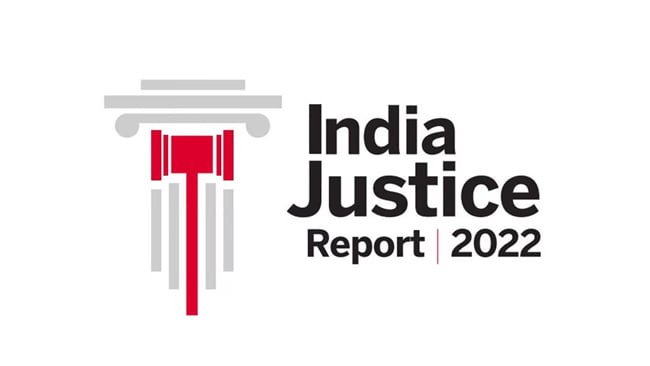
Jaipur, November 2023.
The 2022 India Justice Report (IJR), which serves as India’s only ranking of states on justice in the country, was released earlier this year. The report ranked Rajasthan at number 15 out of 18 medium and large-sized states in the country.
Despite a few scattered improvements between 2008 and 2021, challenges around persistent vacancies and diversity in the Police and the Judiciary remain as pressing concerns for efficacious justice delivery.
Police vacancies tripled since 2008; ‘general’ category hits historic low, women’s share stalls at 10%
While the sanctioned strength of the police nearly doubled from 78,033 to 1,10,949 from 2008 to 2021, vacancies have increased threefold from 5,054 in 2008 to a staggering 15,412 in 2021. The vacancy amongst constable positions remained relatively low at 8%. In contrast, the percentage of vacant positions among officers stood at an alarming 46% – a figure that has more than doubled from 22% in 2008.
Within these vacancies, those for the ‘general’ category increased from ‘0’ vacancies in 2008 to 10% in 2021, leaving 3,414 positions vacant among officers and 2,076 among the constabulary. The overall share of the ‘general’ category reduced from 56% in 2008 to 51% in 2021. Despite a persistent decline in the overall share of the ‘general’ category since 2008, it continues to form more than 50% of the state’s police force. With women forming a mere 10% of the total police force, the Rajasthan police must now hire 23,354 women to meet its own 30% reservation target.
Caste diversity a challenge with 66% vacancies concentrated amongst OBC offers
As per the latest Data on Police Organisations (DOPO 2022), the majority of vacancies in the police are concentrated among OBC officers at 66%, which is the highest across ranks and categories. This is followed by Scheduled Castes (SC) at 46%. However, marking some progress in caste diversity, there has been a slight reduction in vacancies among Scheduled Tribes (ST) officers, which has dropped from 47% in 2008 to 38% in 2021.
Overall, there has been a slight improvement in the representation of STs and OBCs, whereas the share of SCs has remained stagnant. In the constabulary, quotas for STs have been consistently met from 2008 to 2021, except in 2012, 2013 and 2014. Additionally, vacancies for OBCs in the constabulary have also witnessed a steep decline, halving from 43% to 24% during this period.
Judiciary vacancies on the rise, only 2 out of 27 working HC judges women
There has been an increase in the vacancies within the state’s courts, rising to 20% in subordinate courts and 48% in the High Court as compared to 16% and 45% respectively in 2018. As of 2022, Rajasthan’s subordinate courts have a total sanctioned strength of 1,579, out of which 317 positions are vacant. Of these, a majority (196) are from SC/ST/OBC categories, and the remaining (121) are from the ‘general’ category. Amongst caste category judges in these courts, OBCs have the highest share of 25%. The share of women in subordinate courts has improved as well, jumping from 35% in 2018 to 40% of the working strength in 2022. However, in the High court, only two out of the 26 working judges are women.
As per the latest insights, total vacancies across police, prisons, and judiciary in Rajasthan stand at 17,784.
Ms. Maja Daruwala, Chief Editor, India Justice Report 2022, said, “As we make efforts toward fulfilling our global commitment of ensuring strong justice institutions and accessible justice for all by 2030, the India Justice Reports provide a much-needed spur to address the deficiencies in the present-day justice system, particularly within the domains of police and judiciary. By sparking an insightful dialogue around the persistent challenges, these insights reiterate the need for both immediate and foundational reforms to our justice delivery systems, which will ultimately pave the way towards a just and equitable society.”
